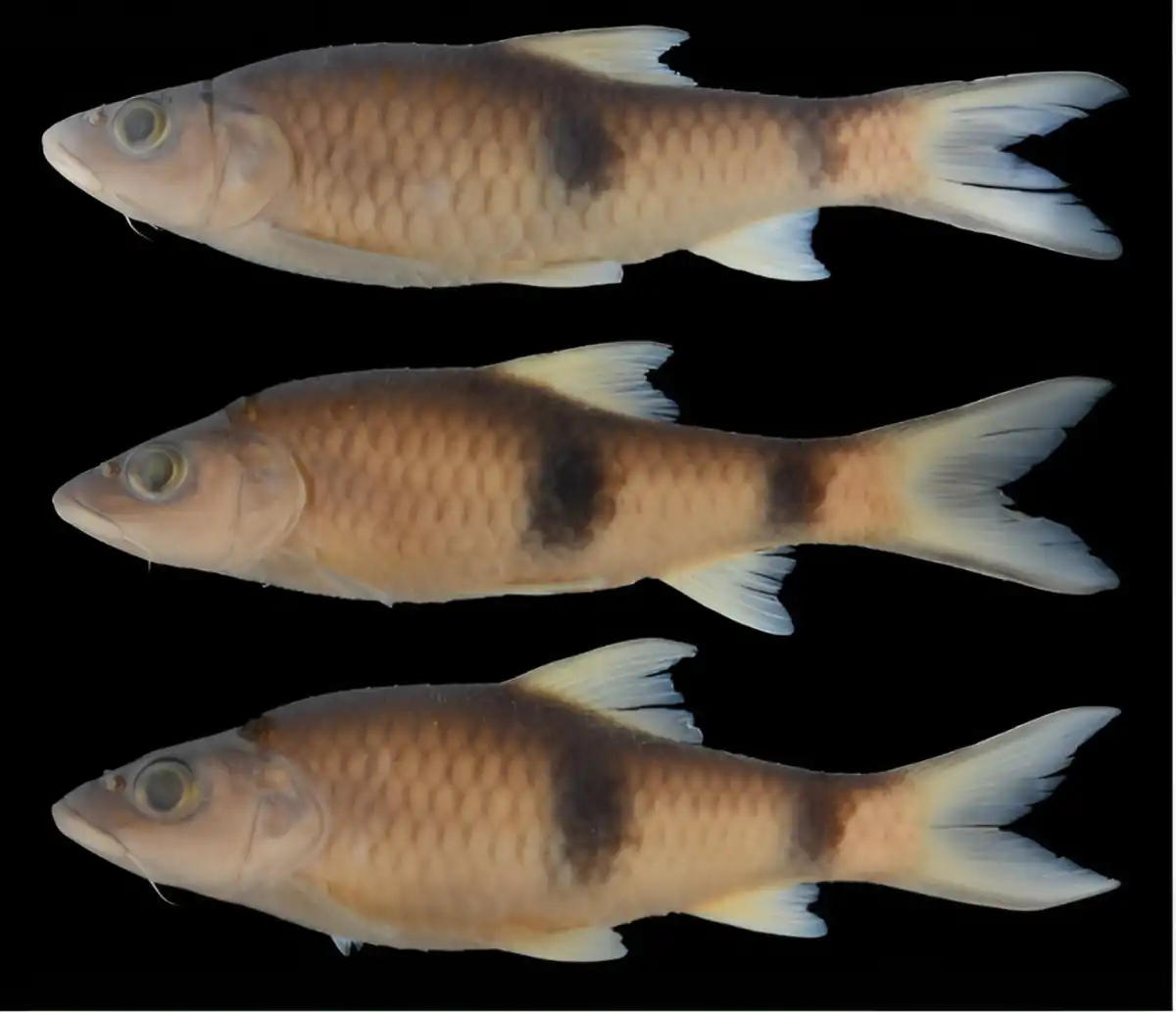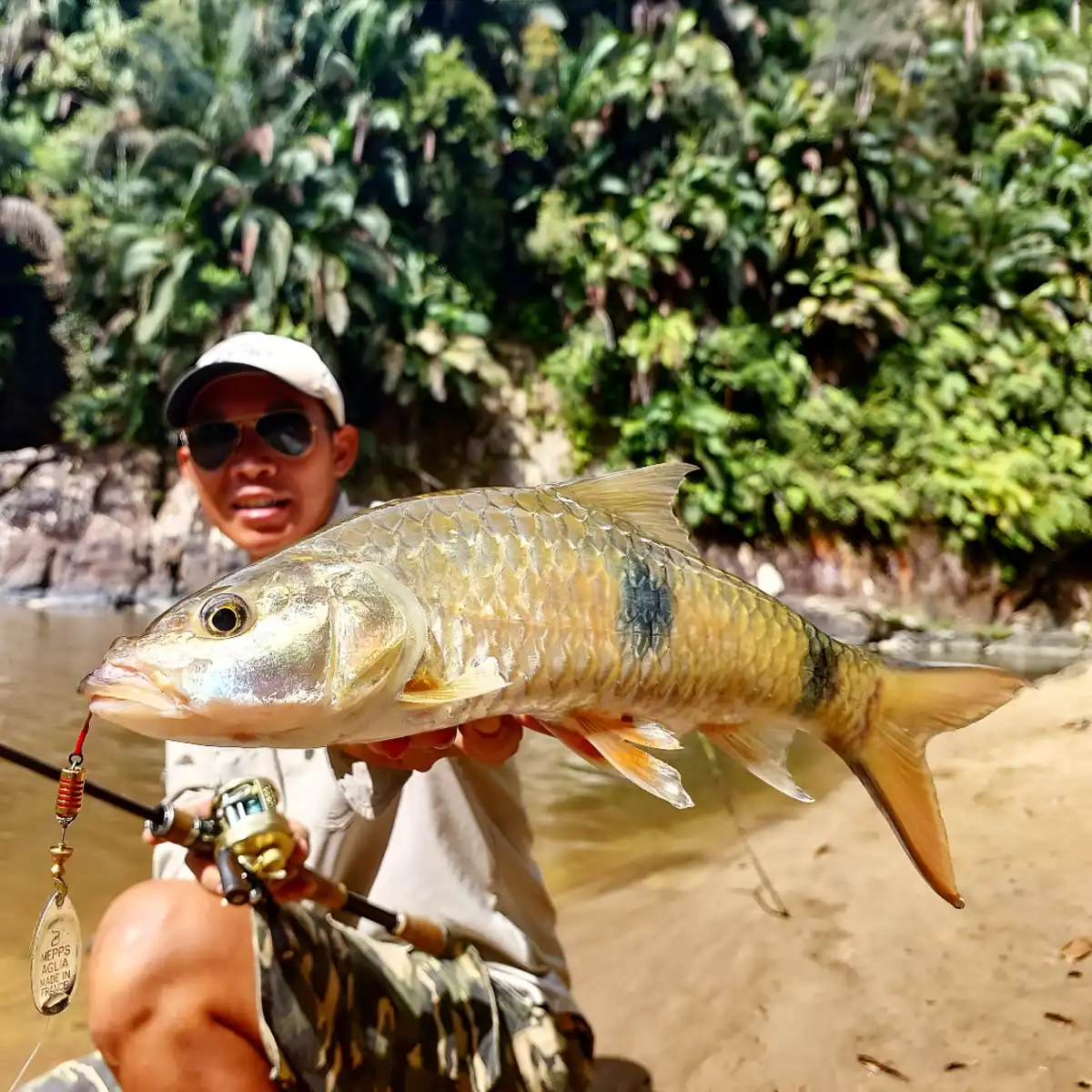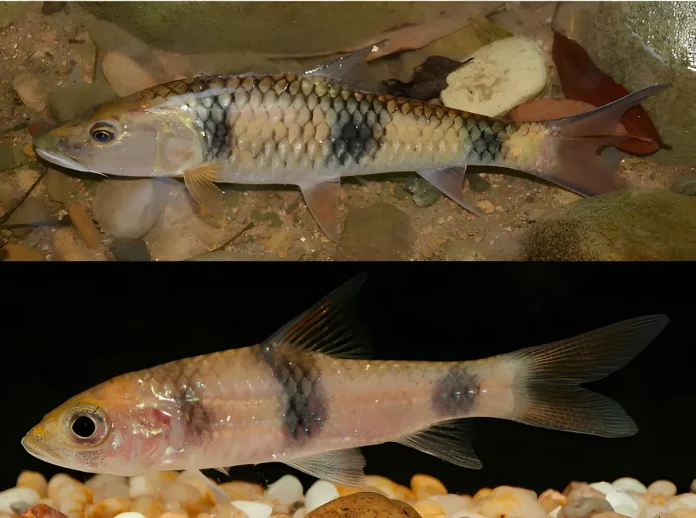Scientists confirm two new types of freshwater fish in Sarawak rivers
IN the fast-flowing Sarawak rivers, two freshwater fish have been hiding in plain sight for decades. Long known to local anglers and communities, these powerful swimmers were part of daily life and folklore. Yet only now have scientists confirmed that they are, in fact, two entirely new species.
The discovery, led by researchers from Universiti Malaysia Sarawak (Unimas) and Singapore’s Lee Kong Chian Natural History Museum, was detailed in the Raffles Bulletin of Zoology earlier this year. The study described Hampala lupar and Hampala katibas, both belonging to the cyprinid family and native to the rivers of Borneo.
Story beneath currents
For local fishers, the discovery may seem more like a confirmation than a revelation. The fish have long been known by their local names, adung and juak, and are prized as food and as symbols in Iban storytelling. Their strong, streamlined bodies and fierce temperament made them legendary among those who live by the rivers.
To scientists, however, they had always been grouped under a single name, Hampala bimaculata. It took years of fieldwork, re-examination of museum specimens and countless comparisons before ichthyologist Tan Heok Hui and Unimas biologist Jongkar Grinang began to suspect that something was not quite right.
Their clue came from the patterns on the fishes’ bodies. One population showed three black bars across its flanks, while another had only two. The difference appeared in adults and juveniles alike. When the researchers mapped their samples, they noticed the two populations were separated by the Lupar Geological Divide, a natural fault line running across central Sarawak.

Two rivers, two worlds
In the southern Lupar basin, Hampala lupar was found in the Engkari River, a clear and fast-moving waterway running through thick forest. The fish has a silvery-gold body that flashes in the sunlight, bright orange fins and three distinct vertical bands. It prefers deeper pools and shaded waters surrounded by dense vegetation.
Further north, Hampala katibas occupies the upper Katibas River, part of the Rejang basin, as well as several rivers extending into Brunei. It is marked by two bold black bars and a leaner shape suited to swifter, shallower streams.
The researchers observed both species living alongside barbs, loaches, catfish and other freshwater species, each adapted to their specific environments.
Lessons from ancient landscape
The differences between the two fish reveal more than just new species. They offer clues about how Borneo itself evolved. The Lupar divide, which dates back more than 100 million years, is believed to have separated the island’s northern and southern river systems. Over time, that divide shaped how freshwater animals adapted to their surroundings, giving rise to distinct forms on either side.
The study also drew parallels with other fish pairs that have evolved along the same geological boundary, reinforcing the idea that Borneo’s rivers are natural laboratories of evolution.

Part of local story
Among the Iban community, the Hampala fish holds a cultural significance that goes beyond its scientific name. The larger species, called adung, and the smaller juak, are often mentioned in songs, parables and sayings about strength and resilience. In the study, researchers noted that such names reflect a deep connection between the people and their rivers.
Despite their familiarity to locals, both fish have remained largely undocumented in science until now. The formal recognition of Hampala lupar and Hampala katibas adds to Malaysia’s growing list of freshwater discoveries, showing that even in well-studied regions, nature still has surprises waiting to be found.
Protecting rivers that reveal them
The discovery also highlights the importance of conserving Sarawak’s river ecosystems, many of which face pressure from deforestation and human activity. Each new species serves as a reminder of how delicate and complex these environments are, and how much they can teach us about the past and the present.
As Malaysia continues to uncover its hidden wildlife, Hampala lupar and Hampala katibas stand as symbols of discovery, persistence and respect for the natural world. Following the rediscovery of the Gombak bent-winged firefly earlier this year, they remind us that in every stretch of river and forest, life continues to surprise even those who have spent a lifetime studying it.








